-
 Bitcoin
Bitcoin $107,352.1067
0.28% -
 Ethereum
Ethereum $2,429.3531
-0.90% -
 Tether USDt
Tether USDt $1.0001
-0.02% -
 XRP
XRP $2.1894
4.62% -
 BNB
BNB $646.7968
0.36% -
 Solana
Solana $147.4290
4.03% -
 USDC
USDC $0.9998
-0.02% -
 TRON
TRON $0.2756
1.52% -
 Dogecoin
Dogecoin $0.1630
1.14% -
 Cardano
Cardano $0.5612
1.18% -
 Hyperliquid
Hyperliquid $37.0580
-0.05% -
 Bitcoin Cash
Bitcoin Cash $496.9410
-0.09% -
 Sui
Sui $2.7318
3.19% -
 Chainlink
Chainlink $13.1503
0.58% -
 UNUS SED LEO
UNUS SED LEO $9.0766
0.55% -
 Avalanche
Avalanche $17.7220
1.46% -
 Stellar
Stellar $0.2380
1.52% -
 Toncoin
Toncoin $2.8439
0.38% -
 Shiba Inu
Shiba Inu $0.0...01143
1.84% -
 Litecoin
Litecoin $85.8053
1.47% -
 Hedera
Hedera $0.1483
2.70% -
 Monero
Monero $314.3240
2.12% -
 Bitget Token
Bitget Token $4.6725
0.77% -
 Dai
Dai $1.0000
0.00% -
 Polkadot
Polkadot $3.3555
1.28% -
 Ethena USDe
Ethena USDe $1.0001
0.02% -
 Uniswap
Uniswap $7.0890
2.64% -
 Pi
Pi $0.5355
-3.40% -
 Pepe
Pepe $0.0...09393
1.06% -
 Aave
Aave $256.8136
-1.90%
Crypto Payment Terminology: Vocabulary from Lightning Network to Merchant Acceptance
The Lightning Network enables faster, cheaper crypto transactions via off-chain channels, crucial for merchant acceptance and everyday use.
May 11, 2025 at 06:28 pm

In the dynamic world of cryptocurrency, understanding the terminology related to crypto payments is crucial for both users and merchants. From the Lightning Network to merchant acceptance, this article delves into key terms and concepts that are essential for navigating the crypto payment landscape. Whether you're a seasoned crypto enthusiast or a newcomer looking to understand how cryptocurrencies can be used for transactions, this comprehensive guide will equip you with the necessary vocabulary.
Lightning Network
The Lightning Network is a second-layer scaling solution built on top of a blockchain, primarily Bitcoin, designed to facilitate faster and cheaper transactions. By creating payment channels between users, the Lightning Network allows for off-chain transactions that are settled on the blockchain only when the channel is closed. This significantly reduces the load on the blockchain, enabling microtransactions and instant payments.
To understand how the Lightning Network works, consider the following steps:
- Opening a Payment Channel: Two parties agree to lock a certain amount of cryptocurrency in a multi-signature wallet. This creates a payment channel between them.
- Conducting Transactions: Within the channel, the parties can send and receive payments back and forth without broadcasting each transaction to the blockchain.
- Closing the Channel: When the parties are done transacting, they can close the channel, and the final state of the channel is recorded on the blockchain.
The Lightning Network has become a critical component in the crypto payment ecosystem, enabling scalable solutions for everyday transactions.
Off-Chain Transactions
Off-chain transactions are transactions that occur outside of the main blockchain, often facilitated by solutions like the Lightning Network. These transactions are not immediately recorded on the blockchain, which allows for faster processing times and lower fees. Off-chain transactions are particularly useful for microtransactions, where the cost of on-chain transactions might be prohibitive.
To execute an off-chain transaction, follow these steps:
- Establish a Connection: Parties must first establish a connection, often through a payment channel or a similar off-chain solution.
- Transact: Once connected, parties can send and receive funds instantly and at a lower cost.
- Settle: When necessary, the transactions can be settled on the blockchain, ensuring the integrity of the overall system.
Understanding off-chain transactions is essential for anyone looking to leverage the speed and efficiency of crypto payments.
On-Chain Transactions
On-chain transactions are transactions that are recorded directly on the blockchain. These transactions are visible to all network participants and are considered final once confirmed by the network. On-chain transactions are typically slower and more expensive than off-chain transactions but are necessary for settling large amounts or for finalizing off-chain transactions.
To conduct an on-chain transaction, follow these steps:
- Create a Transaction: Use a cryptocurrency wallet to create a transaction, specifying the recipient's address and the amount to be sent.
- Sign the Transaction: Use your private key to sign the transaction, verifying your ownership of the funds.
- Broadcast the Transaction: Send the transaction to the blockchain network, where it will be verified by nodes and miners.
- Wait for Confirmation: Once the transaction is included in a block and confirmed by the network, it becomes final.
On-chain transactions form the backbone of the blockchain's integrity and security, ensuring that all transactions are recorded transparently.
Merchant Acceptance
Merchant acceptance refers to the willingness and ability of businesses to accept cryptocurrencies as a form of payment. This involves integrating payment processing solutions that can handle cryptocurrency transactions, often through third-party services or direct blockchain interactions.
To enable merchant acceptance of cryptocurrencies, consider the following steps:
- Choose a Payment Processor: Select a reputable payment processor that supports cryptocurrency transactions, such as BitPay or Coinbase Commerce.
- Integrate the Payment Gateway: Follow the payment processor's instructions to integrate their payment gateway into your website or point-of-sale system.
- Set Up Wallets: Create cryptocurrency wallets to receive payments, ensuring you have the necessary security measures in place.
- Educate Customers: Inform your customers about the option to pay with cryptocurrencies, providing clear instructions on how to do so.
Merchant acceptance is a crucial step in the widespread adoption of cryptocurrencies, allowing businesses to tap into a new customer base and benefit from the advantages of digital payments.
Payment Processors
Payment processors are third-party services that facilitate the acceptance of cryptocurrencies by merchants. These processors handle the conversion of cryptocurrencies to fiat currencies, manage transaction fees, and provide security measures to protect both merchants and customers.
To use a payment processor for crypto payments, follow these steps:
- Select a Processor: Research and choose a payment processor that meets your business needs, considering factors such as supported cryptocurrencies, fees, and customer support.
- Sign Up: Register for an account with the chosen payment processor, providing necessary business information and completing any required verification processes.
- Integrate the Service: Use the provided tools and APIs to integrate the payment processor into your website or point-of-sale system.
- Configure Settings: Set up your preferred cryptocurrencies, transaction fees, and other settings according to your business requirements.
- Test Transactions: Conduct test transactions to ensure everything is working correctly before going live.
Payment processors play a vital role in bridging the gap between cryptocurrencies and traditional commerce, making it easier for merchants to accept digital payments.
Frequently Asked Questions
Q: What are the benefits of using the Lightning Network for crypto payments?
A: The Lightning Network offers several benefits for crypto payments, including faster transaction times, lower fees, and the ability to conduct microtransactions. By enabling off-chain transactions, it reduces the load on the blockchain, making it more scalable and efficient for everyday use.
Q: How can a business ensure the security of cryptocurrency transactions?
A: Businesses can ensure the security of cryptocurrency transactions by using reputable payment processors, implementing strong security measures for their wallets, and regularly updating their systems to protect against vulnerabilities. Additionally, educating customers about safe practices for sending and receiving cryptocurrencies can help prevent fraud.
Q: Are there any limitations to using cryptocurrencies for merchant acceptance?
A: Yes, there are some limitations to using cryptocurrencies for merchant acceptance. These include price volatility, which can affect the value of received payments, and the need for customers to have a basic understanding of how to use cryptocurrencies. Additionally, regulatory uncertainty in some regions can pose challenges for businesses looking to accept digital payments.
Q: Can cryptocurrencies be used for international transactions?
A: Yes, cryptocurrencies can be used for international transactions, offering a decentralized and borderless payment solution. This can be particularly beneficial for businesses that operate globally, as it eliminates the need for currency conversion and reduces transaction fees associated with traditional international payments.
Disclaimer:info@kdj.com
The information provided is not trading advice. kdj.com does not assume any responsibility for any investments made based on the information provided in this article. Cryptocurrencies are highly volatile and it is highly recommended that you invest with caution after thorough research!
If you believe that the content used on this website infringes your copyright, please contact us immediately (info@kdj.com) and we will delete it promptly.
- Altcoins, Explosive Gains, and Cryptocurrency: What's the Hype?
- 2025-06-28 21:12:19
- SEI Mirroring Solana: Price Spikes and the Next Big Crypto?
- 2025-06-28 20:52:13
- Pi Network's Pi2Day: Token Tank and Disappointing Rollout?
- 2025-06-28 21:27:13
- PENGU Price Surges: Are Whales Targeting $0.0149?
- 2025-06-28 20:30:12
- Bitcoin Adoption, Portfolio Allocation, and Financial Advisors: A New Era
- 2025-06-28 21:27:13
- Kaanch vs. XRP: Spotting the Next Big Thing & Entry Price Opportunities
- 2025-06-28 21:50:12
Related knowledge
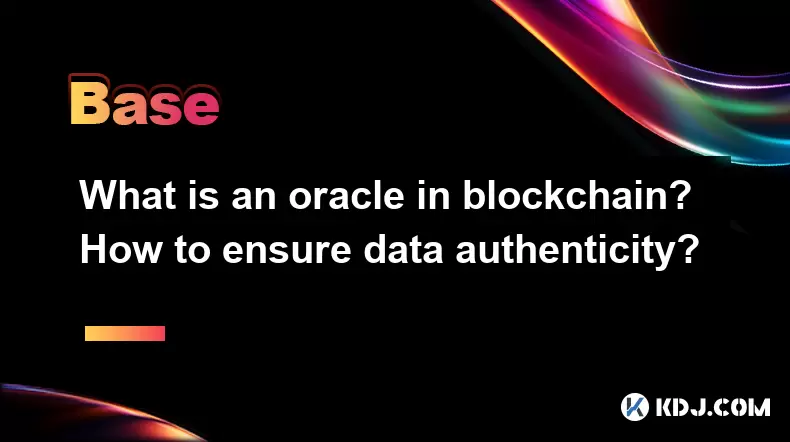
What is an oracle in blockchain? How to ensure data authenticity?
Jun 19,2025 at 08:49pm
Understanding the Role of an Oracle in BlockchainIn the context of blockchain technology, an oracle serves as a bridge between the blockchain and external data sources. While blockchains are inherently secure and decentralized, they cannot access real-world information on their own. Oracles enable smart contracts to interact with off-chain data such as ...
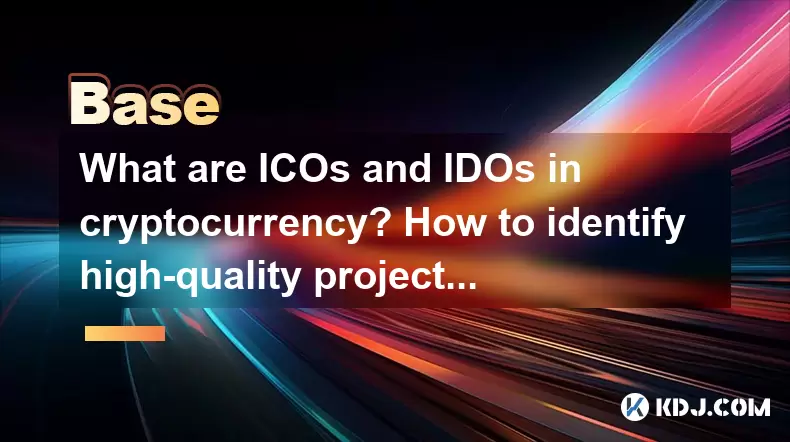
What are ICOs and IDOs in cryptocurrency? How to identify high-quality projects?
Jun 22,2025 at 11:49am
Understanding ICOs in CryptocurrencyInitial Coin Offerings (ICOs) are fundraising mechanisms used by cryptocurrency startups to raise capital for their projects. In an ICO, a company creates and sells its own tokens to investors in exchange for established cryptocurrencies like Bitcoin or Ethereum. The process typically involves the release of a whitepa...
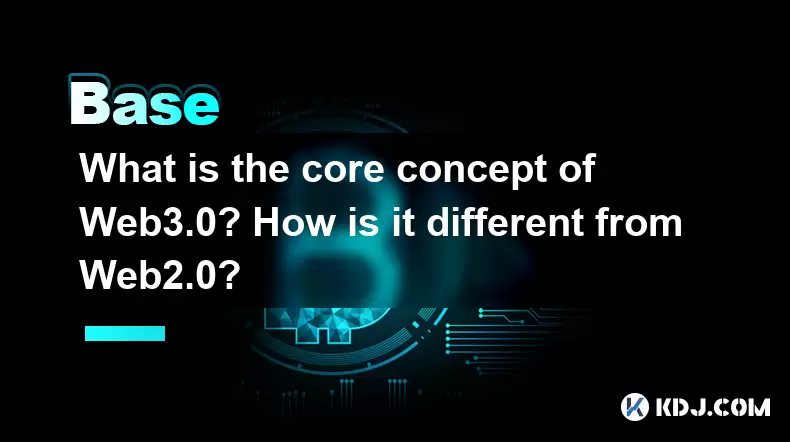
What is the core concept of Web3.0? How is it different from Web2.0?
Jun 21,2025 at 05:56pm
Decentralization as the Foundation of Web3.0The core concept of Web3.0 revolves around decentralization, which fundamentally challenges the centralized architecture of Web2.0. In Web3.0, control and ownership are distributed across a network rather than being held by a central authority or corporation. This is achieved primarily through blockchain techn...
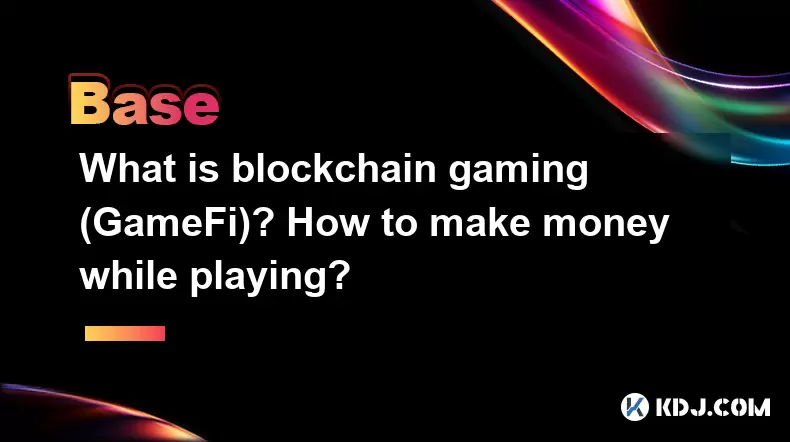
What is blockchain gaming (GameFi)? How to make money while playing?
Jun 20,2025 at 07:56am
Understanding Blockchain Gaming (GameFi)Blockchain gaming, often referred to as GameFi, is a fusion of blockchain technology and video games. It enables players to own in-game assets through non-fungible tokens (NFTs) and earn rewards via cryptocurrencies or token-based systems. Unlike traditional games where items are controlled by centralized develope...
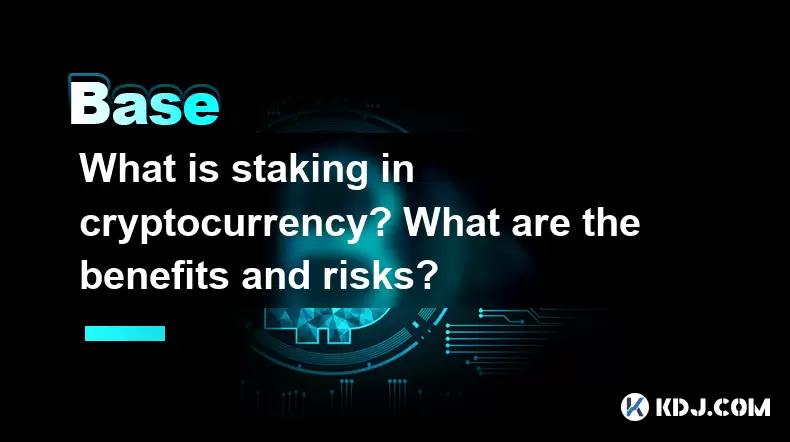
What is staking in cryptocurrency? What are the benefits and risks?
Jun 22,2025 at 10:01am
Understanding the Concept of Staking in CryptocurrencyStaking in cryptocurrency refers to the process of actively participating in transaction validation on a blockchain network that uses a Proof-of-Stake (PoS) consensus mechanism. Instead of miners competing to solve complex mathematical puzzles as in Proof-of-Work systems like Bitcoin, PoS blockchains...
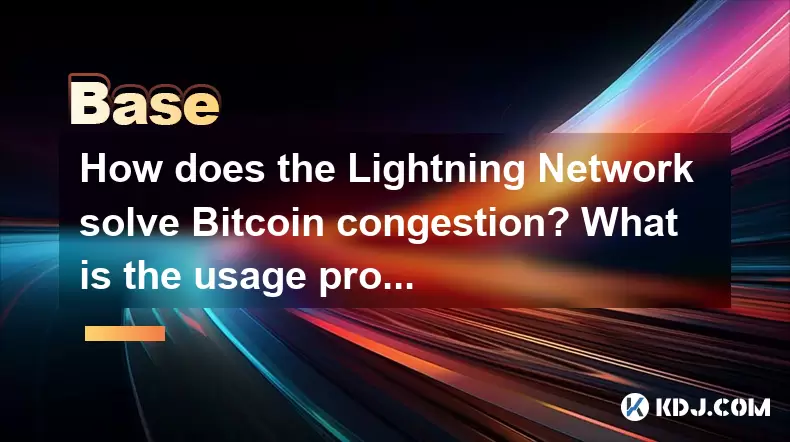
How does the Lightning Network solve Bitcoin congestion? What is the usage process?
Jun 23,2025 at 06:21pm
Understanding Bitcoin Network CongestionBitcoin, as a decentralized digital currency, operates on a blockchain that records every transaction in a public ledger. Each block has a limited size, typically 1 megabyte, which allows for only a certain number of transactions per second (TPS). When the number of transactions increases, the network becomes cong...

What is an oracle in blockchain? How to ensure data authenticity?
Jun 19,2025 at 08:49pm
Understanding the Role of an Oracle in BlockchainIn the context of blockchain technology, an oracle serves as a bridge between the blockchain and external data sources. While blockchains are inherently secure and decentralized, they cannot access real-world information on their own. Oracles enable smart contracts to interact with off-chain data such as ...

What are ICOs and IDOs in cryptocurrency? How to identify high-quality projects?
Jun 22,2025 at 11:49am
Understanding ICOs in CryptocurrencyInitial Coin Offerings (ICOs) are fundraising mechanisms used by cryptocurrency startups to raise capital for their projects. In an ICO, a company creates and sells its own tokens to investors in exchange for established cryptocurrencies like Bitcoin or Ethereum. The process typically involves the release of a whitepa...

What is the core concept of Web3.0? How is it different from Web2.0?
Jun 21,2025 at 05:56pm
Decentralization as the Foundation of Web3.0The core concept of Web3.0 revolves around decentralization, which fundamentally challenges the centralized architecture of Web2.0. In Web3.0, control and ownership are distributed across a network rather than being held by a central authority or corporation. This is achieved primarily through blockchain techn...

What is blockchain gaming (GameFi)? How to make money while playing?
Jun 20,2025 at 07:56am
Understanding Blockchain Gaming (GameFi)Blockchain gaming, often referred to as GameFi, is a fusion of blockchain technology and video games. It enables players to own in-game assets through non-fungible tokens (NFTs) and earn rewards via cryptocurrencies or token-based systems. Unlike traditional games where items are controlled by centralized develope...

What is staking in cryptocurrency? What are the benefits and risks?
Jun 22,2025 at 10:01am
Understanding the Concept of Staking in CryptocurrencyStaking in cryptocurrency refers to the process of actively participating in transaction validation on a blockchain network that uses a Proof-of-Stake (PoS) consensus mechanism. Instead of miners competing to solve complex mathematical puzzles as in Proof-of-Work systems like Bitcoin, PoS blockchains...

How does the Lightning Network solve Bitcoin congestion? What is the usage process?
Jun 23,2025 at 06:21pm
Understanding Bitcoin Network CongestionBitcoin, as a decentralized digital currency, operates on a blockchain that records every transaction in a public ledger. Each block has a limited size, typically 1 megabyte, which allows for only a certain number of transactions per second (TPS). When the number of transactions increases, the network becomes cong...
See all articles
























































































